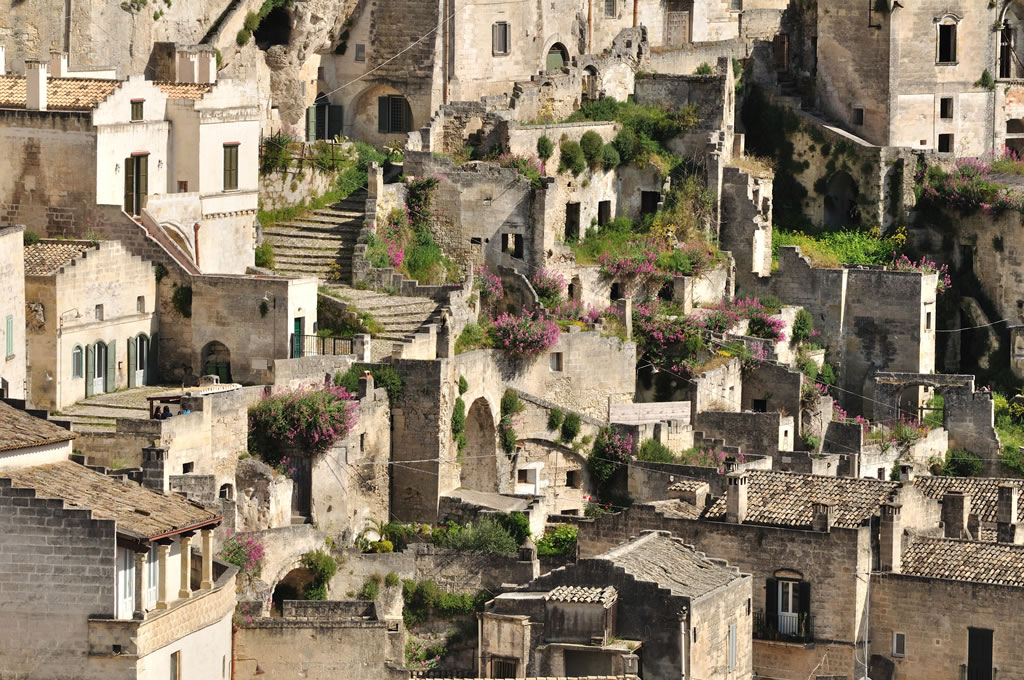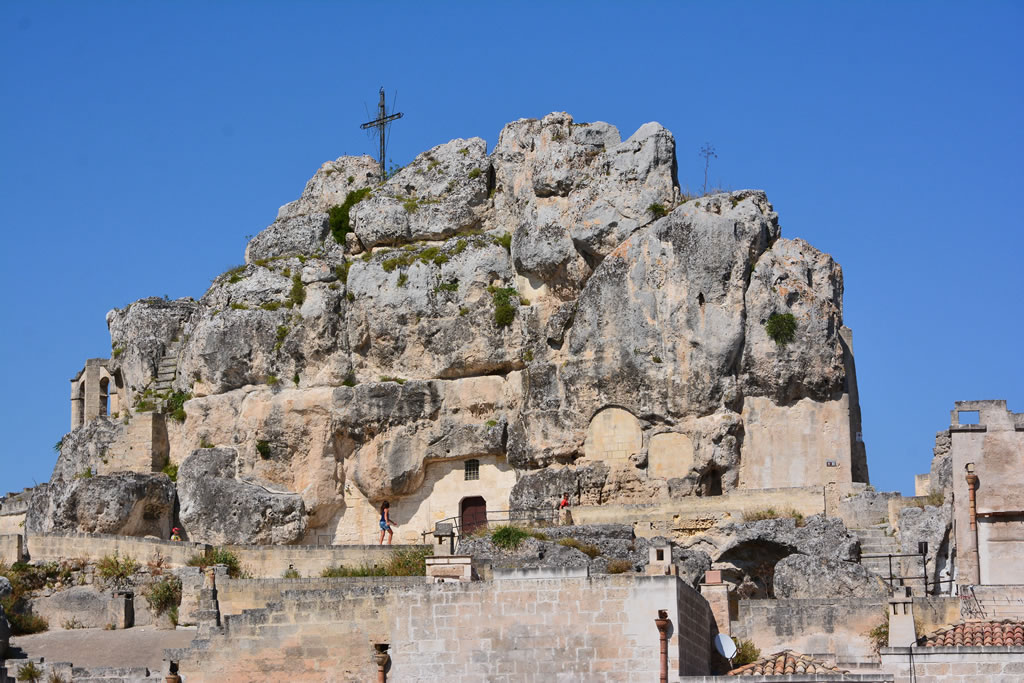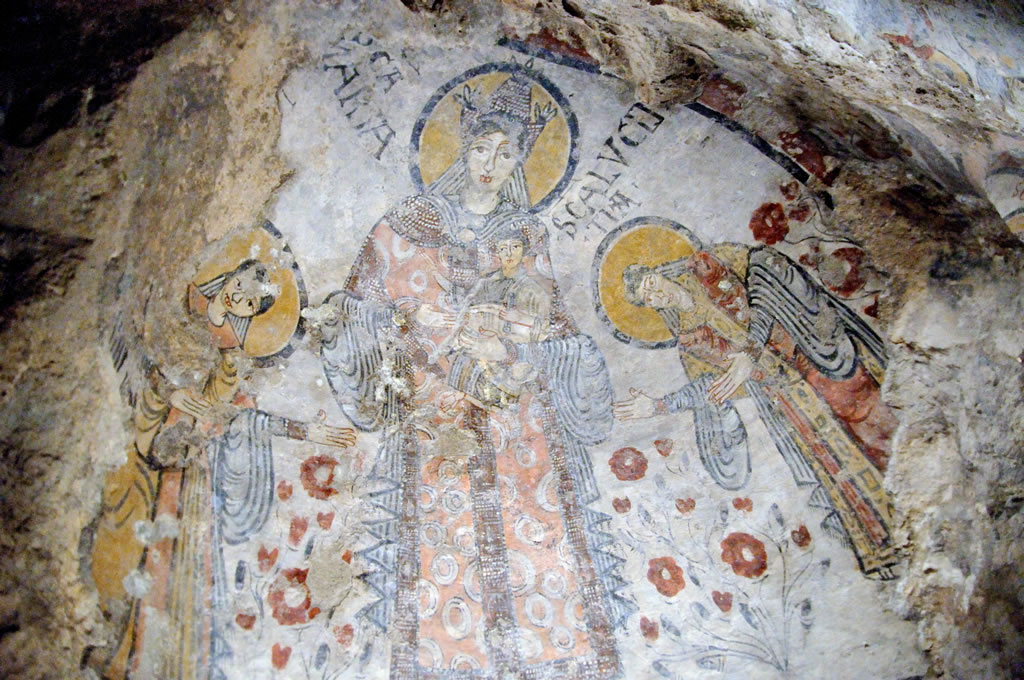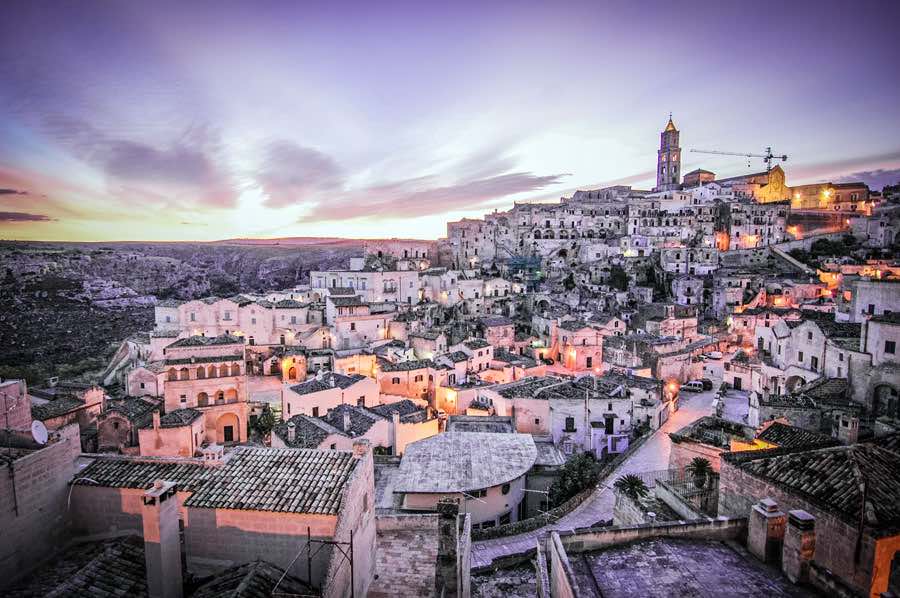What to see and What to do in Matera. Drink & Food, Best Hotels, Amazing Experiences…Italy2love leads you to Matera
Today we fly to Basilicata, in southern Italy to discover a town that has now become famous all over the world: we are talking about Matera, the city of the Sassi.
The Sassi di Matera are actually the two main districts that make up Matera, the Sasso Caveoso and the Sasso Barisano, where the cave houses were excavated, dwellings occupied until the 1950s. Matera has undergone a significant transformation, even recently, and there are many things to see.
Matera
Matera is the City of Stones, located in Basilicata on the Murgia plateau a few kilometers from the border with Puglia. It is a place that preserves some of the most ancient and fascinating testimonies of human history starting from the Paleolithic and continuously in the following millennia up to the present day.
The city is known all over the world for the Sassi, the ancient districts of the city declared a World Heritage Site by UNESCO in 1993. To this recognition is added the most recent one obtained on 17 October 2014 with which Matera was designated European Capital of Culture 2019.

Historic centre of Matera
Matera is characterized by a rocky landscape of the Murgia Materana engraved by the deep canyon of the Gravina di Matera which separates the Sassi and the modern city from the Natural Historical Archaeological Park of the Rupestrian Churches of Matera in which the original environment in which the man then transformed into the Sassi, a town with unique details on one of the two sides of the canyon.
What to see in Matera – Experiences and Tours
The places to visit in the city of Matera are the Sassi, the historic center and the eighteenth-century axis, the museums and rock churches, the Murgia Materana Park. In Matera these places blend continuously, offering a fascinating itinerary aimed at allowing you to discover the historical evolution of the city.
The city can be visited all year round (pay attention to the heat of July and August)
Visit the historic center of Matera
The historic center of Matera is located on the plateau that delimits the Sassi at the top. Here too Matera shows different levels of urban overlap. In the central Piazza Vittorio Veneto there are some openings that show the original level of the places, now called hypogea, which are located below the same square.
These environments are articulated in continuity forming a real submerged city connected with the Sassi. Here there are exceptional rock structures such as the large cistern called Palombaro Lungo with walls 15 meters high and until recently navigable.
The historic center of Matera develops with streets that connect different squares along an axis called the eighteenth-century axis of the city because it took its appearance from the end of the 1600s. In the center of Matera there are a series of important palaces and churches that have had a particular importance in the course of the town’s history.
Along the route that starts from the 13th century church of San Giovanni Battista, crosses Piazza Vittorio Veneto and Via del Corso and continues up to Via Ridola, the historic center of Matera offers a series of monumental churches and palaces that house the various cultural garrisons of the city. : the Provincial Library, the Higher Institute for Conservation and Restoration, the D. Ridola National Archaeological Museum, the National Museum of Medieval and Modern Art of Basilicata at Palazzo Lanfranchi.
The monumental churches follow one another along the entire path of the center from which, taking the ancient road that leads to Civita, you get to the Cathedral, also from the thirteenth century, which dominates the Sassi di Matera on both sides.

Historic centre of Matera
The “Sassi di Matera”
The Sassi of Matera represent the most visited attraction of this city: these are the two main districts of Matera formed by dwellings, the so-called cave houses, and by rupestrian architectures carved into the rock of the Murgia of Matera and inhabited since Prehistoric times.
The “Sassi”, together with the Civita district where the Cathedral of Matera stands, constitute the historic center of Matera: you will be surrounded by a succession of houses, terraces, stairways, gardens and winding alleys capable of offering very picturesque views where it is easy to get lost as in a labyrinth.
The Sassi di Matera have been excavated on the side of the Gravina valley: this is the reason why we recommend you wear comfortable shoes (obviously no heels), you won’t regret it! They take the name of Sasso Barisano, the largest district so called because it faces Bari to the north-west, and of Sasso Caveoso, the southernmost area considered to be the oldest part that most retains the authentic appearance of the rock city.
An important stop inside the Sassi di Matera is Casa Noha, the first FAI property in Basilicata, housed in the ancient residence that belonged to the noble Noha family: Casa Noha houses the tourist information center and inside you can see the movie “The invisible stones.
Extraordinary journey in the history of Matera ”, projected on the stone walls of the house, which tells the story of the Lucanian town, from prehistoric times to today. Ticket Admission costs € 4

And…The Sassi today
Today the Sassi have been defined as a cultural landscape according to the definition with which they were welcomed into the Unesco World Heritage, yet in the 1950s they were defined as national shame.
From 1952 with the law “Risanamento dei Sassi di Matera” the evacuation and displacement of the Sassi was ordered: the inhabitants of the cave houses were forced to abandon their old homes and this resulted in a significant urban development of the city of Matera including a zoning plan. The displacement was followed by an environmental redevelopment plan of the Sassi di Matera: this is why today inside the Sassi di Matera there are no longer occupied houses, but hotels, wellness centers, restaurants, shops or museums as in the case of some cave houses, which have been maintained intact and open to the public as a museum.
The cisterns under Piazza Vittorio Veneto
In the Matera area, the collection and storage of water has been witnessed since the Neolithic; there are numerous cisterns in the Sassi and in the Murgia that date back to the Stone Age. This remote ability to manage water together with other peculiarities of the settlement earned the city Unesco recognition.
The long Palombaro and the new Palombaro(diver)
It is not yet clear why in Matera and in some areas of Southern Italy the cisterns are called divers. The most accredited studies favor two hypotheses, one is that it derives from the Latin name with which the person who dealt with water and canalizations was called by the Romans, the Plumbarius; The other instead believes that it derives from the name of the wall that was erected to close an environment and make it a cistern, the Palombaro, in fact.
Today under the large central square of Matera there are two large cisterns, both of which can be visited, the new Palombaro and the Long Palombaro. The latter is an imposing cistern which can be accessed from the square and is located a short distance from the new Palombaro. It is a huge cisteran that extends for most of the portion of the square in front of the Annunziata convent, home to the Tommaso Stigliani Provincial Library.
It too is the result of a nineteenth-century expansion decided to prevent water in excess of the capacity of three existing cisterns from being thrown away.
The Cathedral area and the eighteenth-century axis
From Piazza del Sedile going up via Duomo you will arrive at the Cathedral dating back to 1270 flanked by a majestic bell tower that dominates the whole landscape of the city. The Cathedral has a Romanesque-Apulian style, but is characterized by unique and valuable artistic details and elements both inside and out.
Around the Cathedral there are the palaces of the families with noble titles who lived there such as Palazzo Gattini (Conti Gattini), Palazzo Venusio (Marquesses of Venusio), Palazzo Malvinni Malvezzi (Dukes Malvinni Malvezzi), families who had besides these huge palaces also great possessions in the territories of the Murgia and the Matera countryside. These palaces were built in such a way as to constitute defense garrisons of the mother church.
Rock churches
There are 155 rupestrian churches in Matera, most of which date back to the Middle Ages. They are set so well in the rock that it is not always possible to distinguish them from the rest of the houses. They are not all found in the historic center, of course, but are scattered throughout the adjacent territory, within the Park of the Rupestrian Churches of Materano.

The charm of Matera’s rock churches lies precisely in the unusual combination of the rough beauty of the outside and the rich internal decorations. The Church of Santa Barbara is perhaps the one that, among all, can boast the most interesting frescoes.
How many days does it take to visit Matera?
a two-day stay is enough if you want to visit the classic Matera (Sassi and churches in the center). an extra day could be useful to visit the rock churches that are outside Matera (truly spectacular and unique in the world).
What to eat in Matera
The traditional cuisine of Matera is a simple cuisine in which stale bread is often used, made mainly of vegetables, legumes and cereals with a sparing use of meat. Today, many restaurateurs have kept traditional recipes, others have introduced innovations in the preparation of dishes, always using local products of excellence.
The level reached by Matera catering is undoubtedly among the best in southern Italy thanks to the high quality of the raw material used, there is something for all tastes and budgets.
Where to eat (and Drink)
Only a permanent resident could provide you with exhaustive advice on restaurants in Matera. We will tell you about our knowledges and experience as traveler, since we have always had a great time. Among the Sassi you will really find a multitude of restaurants. Some boast panoramic terraces and exclusive menus, others look much more like rustic taverns.
There are also many smaller places, where you can have a quick but tasty lunch, without spending a fortune. The first suggestion is to book, especially if you want to dine in the Sassi di Matera, in high season (I tell you this because I only managed to find a place on the tenth phone call!).
The first restaurant I recommend is Nadì. It does not have a panoramic terrace but the outdoor patio allows you to dine in the heart of the Sassi di Matera. The interior is carved into the rock, very impressive. Traditional menu, excellent wine, fair prices.
If, on the other hand, you want a quick but typical lunch, try the Gahvè. It looks like a bar (but overlooks a delightful square and the outside tables are very nice) but offers truly amazing sandwiches, all with local ingredients.
Finally, the 79 Brewery. A truly unmissable stop for anyone who loves craft beer. Absolutely to try “La Monica” an exceptional Belgian Strong Ale and “La Rossy”, a truly irresistible Scotch Ale (try them all, if you stop in Matera for two days you will have the time).
Accommodation in Matera, but where?
Although Matera is not huge, before leaving it is a good idea to take some time to understand the shape of the city so that you can choose the best area to stay according to your needs.
Matera, in fact, is divided into two distinct parts: the area of the old historic center (the Sassi) and the area of more recent construction. In turn, both the Sassi and the modern city are divided into districts.
Depending on whether you are traveling as a family, as a couple or with friends, if you want to spend your holiday only in the city or if you want to move around, if you arrive by car or other means, below we will recommend what are, in our opinion, the best areas to sleep in Matera.
Where is better to stay in Matera?
The best place to stay in Matera is right in the center, inside the Sassi. So you can enjoy the evocative atmosphere of this ancient labyrinth of cave houses, rock churches, streets and structures built into the rock to the fullest.
Booking.com
